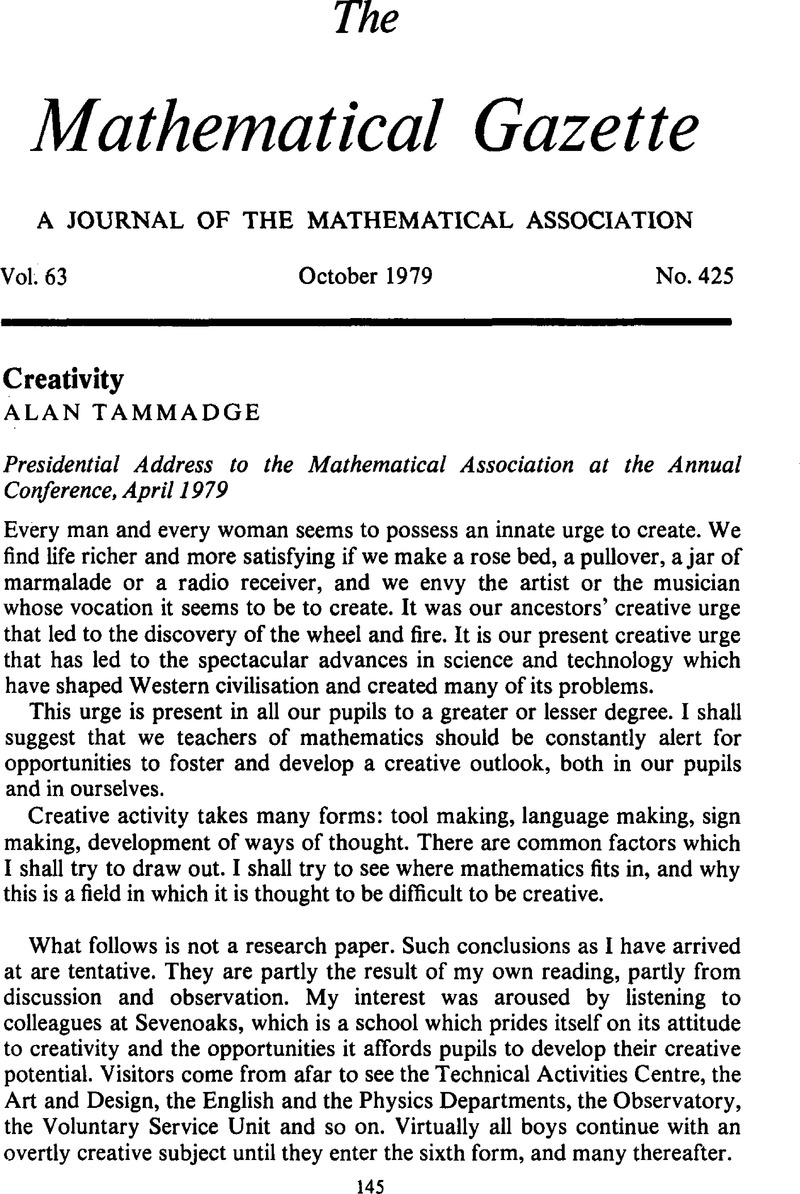Crossref Citations
This article has been cited by the following publications. This list is generated based on data provided by Crossref.
Haylock, Derek W.
1987.
A framework for assessing mathematical creativity in school chilren.
Educational Studies in Mathematics,
Vol. 18,
Issue. 1,
p.
59.
HAYLOCK, DEREK W.
1987.
Mathematical Creativity in Schoolchildren.
The Journal of Creative Behavior,
Vol. 21,
Issue. 1,
p.
48.
Haylock, Derek
1997.
Recognising mathematical creativity in schoolchildren.
Zentralblatt für Didaktik der Mathematik,
Vol. 29,
Issue. 3,
p.
68.
Ramasinghe, W.
2002.
Inspiring examples in rearrangements of infinite series.
International Journal of Mathematical Education in Science and Technology,
Vol. 33,
Issue. 1,
p.
137.
Bélanger, Jean-Philippe
Deblois, Lucie
and
Freiman, Viktor
2014.
Interpréter la créativité du raisonnement dans les productions d’élèves en mathématiques d’une communauté d’apprentissages multidisciplinaires interactifs.
Éducation et francophonie,
Vol. 42,
Issue. 2,
p.
44.
Davis, Trina J.
Phillips, Glenn
and
Kulm, Gerald
2018.
Creativity and Technology in Mathematics Education.
Vol. 10,
Issue. ,
p.
181.
Aljarrah, Ayman
2020.
Describing collective creative acts in a mathematical problem-solving environment.
The Journal of Mathematical Behavior,
Vol. 60,
Issue. ,
p.
100819.
Shaw, Stacy T.
Luna, Michelle L.
Rodriguez, Briana
Yeh, Jan
Villalta, Nancy
and
Ramirez, Gerardo
2022.
Mathematical Creativity in Elementary School Children: General Patterns and Effects of an Incubation Break.
Frontiers in Education,
Vol. 7,
Issue. ,
Aljarrah, Ayman
and
Towers, Jo
2022.
The Emergence of Collective Mathematical Creativity Through Students’ Productive Struggle.
Canadian Journal of Science, Mathematics and Technology Education,
Vol. 22,
Issue. 4,
p.
856.
Sinniah, Chandra
Abdullah, Abdul Halim
and
Osman, Sharifah
2024.
The effectiveness of GeoGebra-assisted non-routine problem-based learning on students’ mathematical creativity.
Vol. 3150,
Issue. ,
p.
080006.
Puji Luritawaty, Irena
Prabawanto, Sufyani
and
Herman, Tatang
2024.
The Difficulty of Students in Utilizing Online Learning Resources to Apply Creative Thinking.
KnE Social Sciences,



